Monthly Topic Briefs
Updates on current issues and projects.
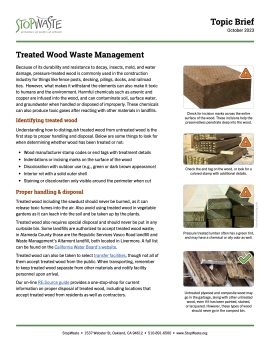
Because of its durability and resistance to decay, insects, mold, and water damage, pressure-treated wood is commonly used in the construction industry for things like fence posts, decking, pilings, docks, and railroad ties. However, what makes it withstand the elements can also make it toxic to humans and the environment.
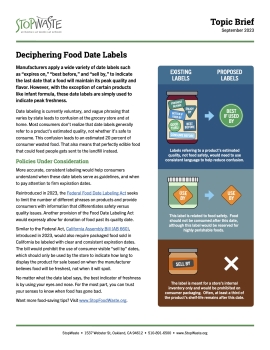
Manufacturers apply a wide variety of date labels such as “expires on,” “best before,” and “sell by,” to indicate the last date that a food will maintain its peak quality and flavor. However, with the exception of certain products like infant formula, these date labels are simply used to indicate peak freshness.
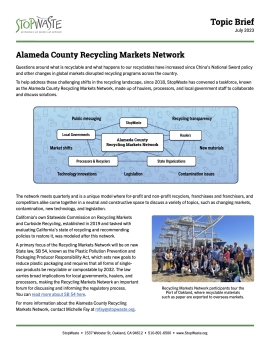
Questions around what is recyclable and what happens to our recyclables have increased since China’s National Sword policy and other changes in global markets disrupted recycling programs across the country.
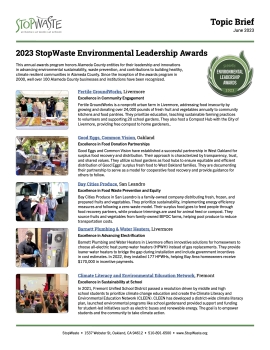
This annual awards program honors Alameda County entities for their leadership and innovations in advancing environmental sustainability, waste prevention, and contributions to building healthy, climate resilient communities in Alameda County. Since the inception of the awards program in 2000, well over 100 Alameda County businesses and institutions have been recognized.

Many common items in our homes such as leftover paint, pesticides, cleaners, batteries and e-waste can be hazardous to humans and pets when handled or disposed of improperly. Because hazardous waste cannot be disposed in landfills, a variety of free, local options are available through the Alameda County Household Hazardous Waste (HHW) program and participating drop-off centers.
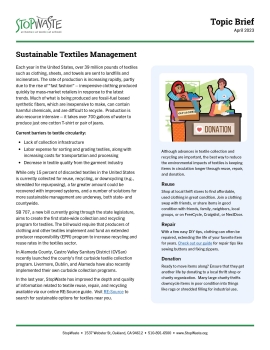
Each year in the United States, over 39 million pounds of textiles such as clothing, sheets, and towels are sent to landfills and incinerators. The rate of production is increasing rapidly, partly due to the rise of “fast fashion” – inexpensive clothing produced quickly by mass-market retailers in response to the latest trends.

Single-use foodware items, such as plastic and paper cups, plates, and utensils, have a short lifespan but a long-lasting negative impact on human health and the environment. Additionally, most of these single-use foodware items are neither readily recyclable nor compostable, and contaminate recycling and composting programs.

Despite the decreasing amount of food sent to the landfill, wasted food is still one of the largest components of the waste stream. In addition to harmful greenhouse gases released when food decomposes in a landfill, all the resources that went into producing that food are also wasted, depleting finite resources and further contributing to climate change.
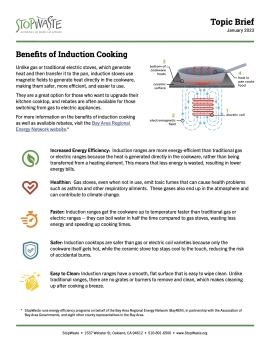
Unlike gas or traditional electric stoves, which generate heat and then transfer it to the pan, induction stoves use magnetic fields to generate heat directly in the cookware, making them safer, more efficient, and easier to use.

California’s schools produce over half a million tons of waste each year, with much of this waste coming from the cafeteria. While the majority of the waste stream in schools is comprised of organics, the rest is primarily from the single-use trays, disposable plastic utensils, and condiment packets.

From uneaten leftovers to discarded wrapping paper, the holidays come with a lot of waste. In fact, from Thanksgiving to New Year’s, Americans produce 25 percent more waste than average. But with a little planning and intention, we can reduce our footprint while still experiencing the joy of coming together with family and friends.
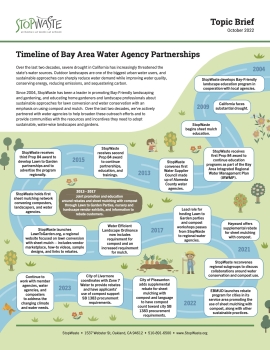
Over the last two decades, severe drought in California has increasingly threatened the state’s water sources. Outdoor landscapes are one of the biggest urban water users, and sustainable approaches can sharply reduce water demand while improving water quality, conserving energy, reducing emissions, and sequestering carbon.